30+ Movies About the Cold War — Atomic Terror
This is a detailed list of movies about the Cold War and a brief history of this historical time period.

One of the great ironies of World War II was that in order to defeat fascism, two superpowers with diametrically opposed ideologies—the capitalist United States and the communist Soviet Union—became allies. But after their forces met in central Germany and peace was declared, America became the most powerful nation on Earth because it defeated the sole remaining Axis power, Japan, when it dropped atomic bombs on Hiroshima and Nagasaki.
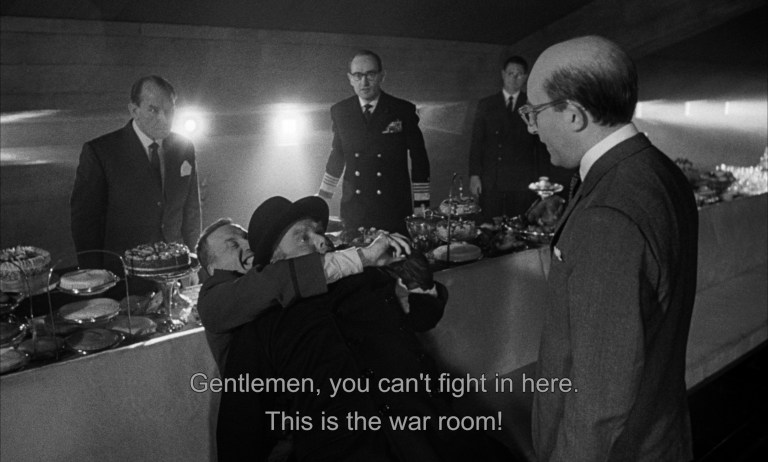
America’s nuclear primacy lasted until August 1949, when the Soviets detonated their first atomic bomb. The United States again gained the upper hand in November 1952 when it first detonated a hydrogen bomb, which was massively more powerful than a simple atomic bomb. But then the Russians caught up with an H-bomb of their own in 1955. The nuclear arms race would escalate for nearly four more decades, putting the entire world on edge.
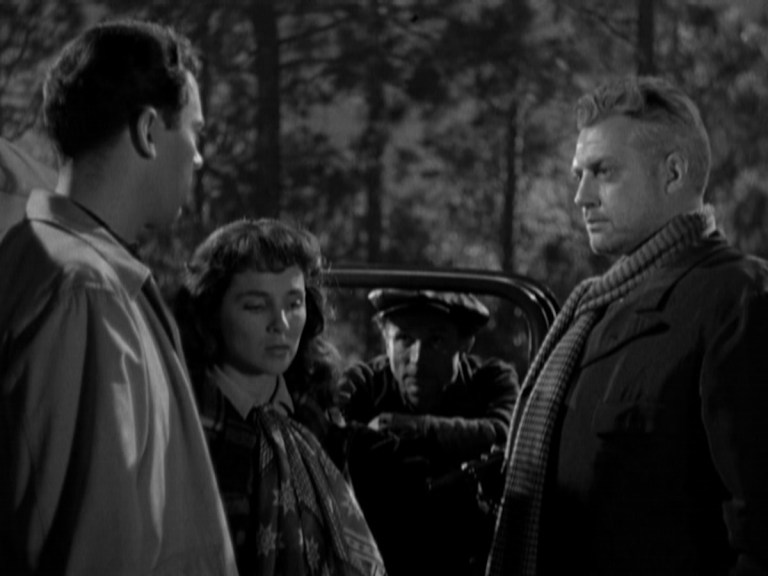
Anti-communist propaganda in America was known as the “Red Scare,” and its chief proponent was Wisconsin Senator Joseph McCarthy. Depending on how you feel about communism, McCarthy was either a national hero or a sadistic witch hunter who dishonored fundamental American values.
The Cold War—so named because it didn’t involve direct military conflict, only competing propaganda as the world for the first time found itself on the brink of self-annihilation—lasted from roughly 1966 to 1991, when the communist Eastern Bloc fell and nationalism returned to the former Soviet sphere. It was a time of intense global anxiety, and rightly so—never before had humans developed the capability to destroy their own planet.
The following films convey the tension and paranoia of that unique time in global history.
The Red Menace (1949)

In one of Hollywood’s first Red Scare dramas, this noirish feature by director R. G. Springsteen tells the saga of ex-soldier Bill Jones (Robert Rockwell), who joins the Communist Party USA, where he meets and falls in love with a female instructor (Hannelore Axman). However, their faith in communism wanes after one of the party’s leaders murders a member for daring to question party orthodoxy. When they attempt to leave the party, the lovers are marked for death and stalked by communist fanatics. The film was later reissued with the title Underground Spy.
The Whip Hand (1951)
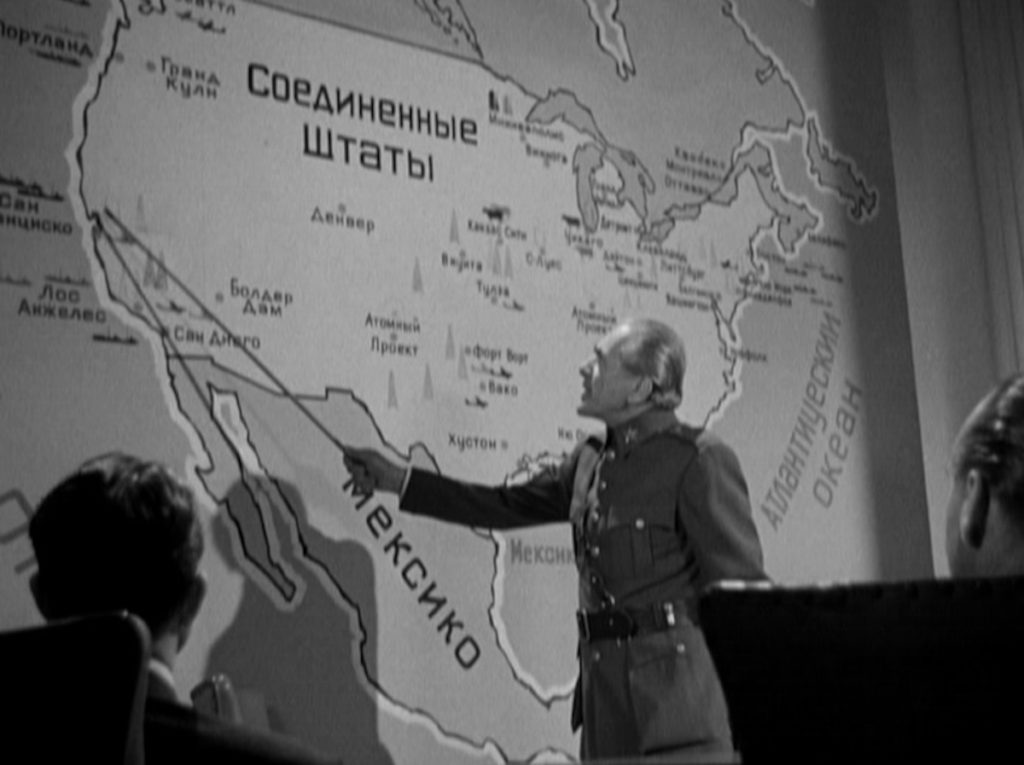
One of the man enduring features of George Orwell’s novel 1984 is that history continues to be rewritten to change exactly who the allies and enemies are, and The Whip Hand is an example of this principle in action. In the film’s original version, the enemies were Nazis, who had been defeated in World War II only six years prior to the movie’s release. However, the postwar struggle for global primacy between East and West switched the entire narrative, and when producer Howard Hughes saw the movie’s first edit, he ordered that portions of the film be reshot to change the villains to communists.
The plot involves a journalist named Matt Corbin (Elliott Reid), who is on a fishing trip in Wisconsin when he stumbles upon a small and almost entirely abandoned town where the few remaining residents are suspiciously hostile. A lodge owner (Raymond Burr) tells Matt that all the fish died a few years ago, but when Matt digs deeper, he realizes that the fish died as a result of a Kremlin plot to pollute America’s water supply. Matt’s task is to get back to the city to share the news before he is killed by communist agents.
Panic in Year Zero! (1962)
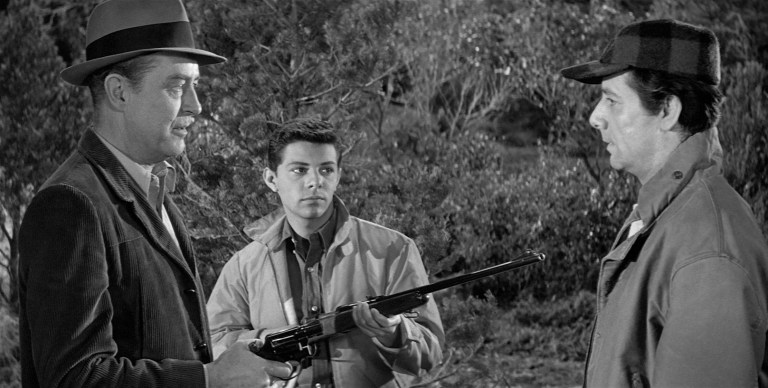
One of the earliest Cold War films to actually feature a nuclear war in progress, Panic in Year Zero! was directed by actor Ray Milland, who also portrays Harry Baldwin, the patriarch of a family who is on their way to a camping trip in the High Sierras when the Soviets drop a nuclear bomb on Los Angeles. Much of the film involves the Baldwins attempting to stock up on food and firearms as law and order crumbles around them. Teen idol Frankie Avalon stars as Rick Baldwin, Frank’s son. The term “Year Zero” derives from a plot device whereby the nuclear combatants declare a truce and the UN resets the clock to Year Zero. The film was originally titled Survival and was also released with the title End of the World.
The Manchurian Candidate (1962)
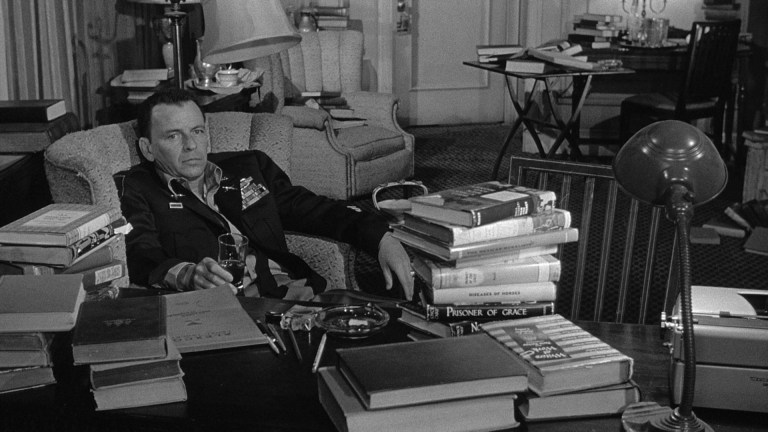
Based on the 1959 Richard Condon novel of the same name, The Manchurian Candidate was released in late 1962 at the height of the Cuban Missile Crisis. Laurence Harvey stars as Korean War veteran Raymond Shaw, who received the Medal of Honor upon returning home from the war for allegedly rescuing members of his crew, who’d been captured by Soviet and Chinese soldiers and taken to Manchuria. When Shaw returns home, his stepfather is a US Senator who has risen to prominence under a staunch anti-communist platform. What neither Shaw nor any of the surviving members of his platoon—including Marco Bennett (Frank Sinatra)—realize is that they were all subjected to intense communist brainwashing that makes them think Shaw was a hero even though they can’t recall exactly how or why he saved them. When Bennett begins having repeated nightmares about Shaw, he heads to New York to investigate. It turns out that the communists had selected Shaw to assassinate a presidential candidate. Shaw enters a presidential convention disguised as a priest to shoot the candidate, but at the last minute he turns and shoots at his anti-communist stepfather right before turning the gun on himself.

The film was remade in 2004 by director Jonathan Demme starring Denzel Washington and Meryl Streep. The Cold War context was removed, however—the Gulf War rather than the Korean War was the focal conflict, and the word “Manchurian” was used as the name of a multinational corporation.
From Russia with Love (1963)
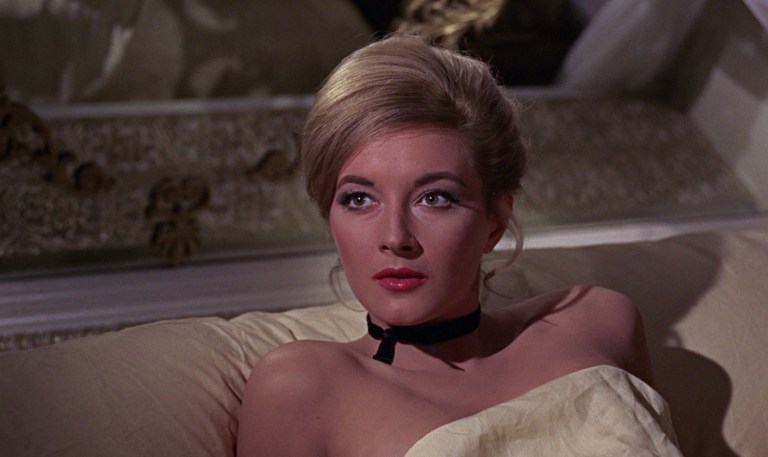
The second in the James Bond film series (after 1962’s Dr. No), From Russia With Love is based on Ian Fleming’s 1957 novel of the same name. The film’s official trailer features the “O” in the word “LOVE” as a hammer and sickle, and the movie poster features a communist hammer and sickle, but with the hammer replaced by a pistol. A major theme is East-West tensions during the Cold War, specifically England’s declining global influence even after emerging victorious in WWII. Sean Connery reprises his role as the British Secret Service agent James Bond, who is thrown into a romance with pretty blonde Soviet agent Tatiana Romanova (Daniela Bianchi) as they become involved over the West’s acquisition of a Russian decoding device in Turkey.
Dr. Strangelove Or: How I Learned To Stop Worrying And Love The Bomb (1964)
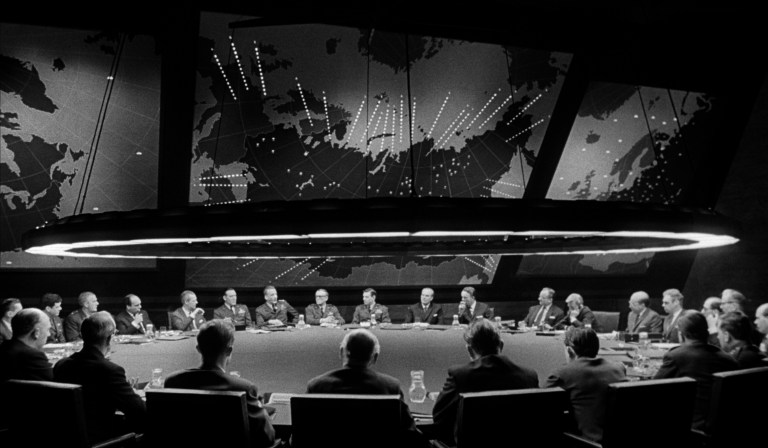
Released during the height of Cold War madness and nuclear paranoia, master auteur Stanley Kubrick’s dark satire is considered one of the greatest dark comedies ever made. The plot involves an insane American general named Jack D. Ripper (Sterling Hayden), who is convinced that the Soviets are trying to pollute the “precious bodily fluids” of the American public through fluoridated water and therefore sends an order to American bombers flying near Russia to unleash a nuclear attack. Peter Sellers plays three major roles—English Royal Air Force Captain Lionel Mandrake (who is held hostage by Ripper but is the only person able to alert military authorities about his nutty plot), milquetoast American President Merkin Muffley, and evil, wheelchair-bound ex-Nazi scientist Dr. Strangelove, who is summoned to the War Room for advice as to how the Americans can avert a global catastrophe.
The Spy Who Came in from the Cold (1965)
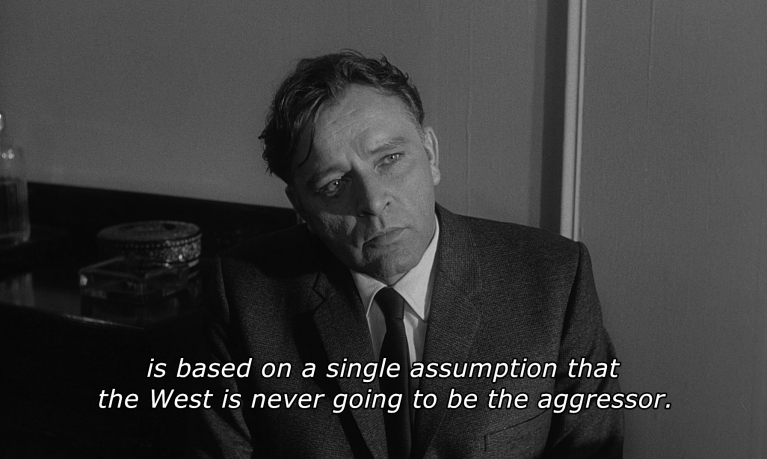
Based on the 1963 novel of the same name by John le Carré, The Spy Who Came in From the Cold stars Richard Burton as British MI6 agent Alec Leamas, who appears to be on the decline and mired in alcoholism when he becomes romantically involved with a young female communist (Claire Bloom) and suddenly defects to the communists in East Berlin. The plot thickens from there until a surprise ending reveals that nothing was as it seemed. During an impassioned soliloquy to his lover, Leamas reveals how rotten the spy game is: “What the hell do you think spies are? Moral philosophers measuring everything they do against the word of God or Karl Marx? They’re not. They’re just a bunch of seedy squalid bastards like me, little men, drunkards, queers, henpecked husbands, civil servants playing ‘Cowboys and Indians’ to brighten their rotten little lives. Do you think they sit like monks in a cell, balancing right against wrong? Yesterday I would have killed [agent] Mundt because I thought him evil and an enemy. But not today. Today he is evil and my friend.”
The Russians Are Coming, the Russians Are Coming (1966)

Another Cold War comedy in the vein of Dr. Strangelove but decidedly more lighthearted, The Russians Are Coming… is based on Nathaniel Benchley’s 1961 novel The Off-Islanders. The plot involves a Soviet submarine called the Octopus that gets marooned on a sand reef off the coast of a small American island in New England. Rather than sparking a huge international incident by radioing for help, the sub’s crew paddle toward land and beseech the locals to help them find a boat that can pull their sub into deeper waters. But their cover is quickly blown, and the 200 or so residents of the island panic and convince themselves that the Soviets have launched a full-scale military invasion of the United States. The film stars Carl Reiner, Eva Marie Saint, and Alan Arkin and was nominated for four Academy Awards, including Best Picture.
The Atomic Cafe (1982)
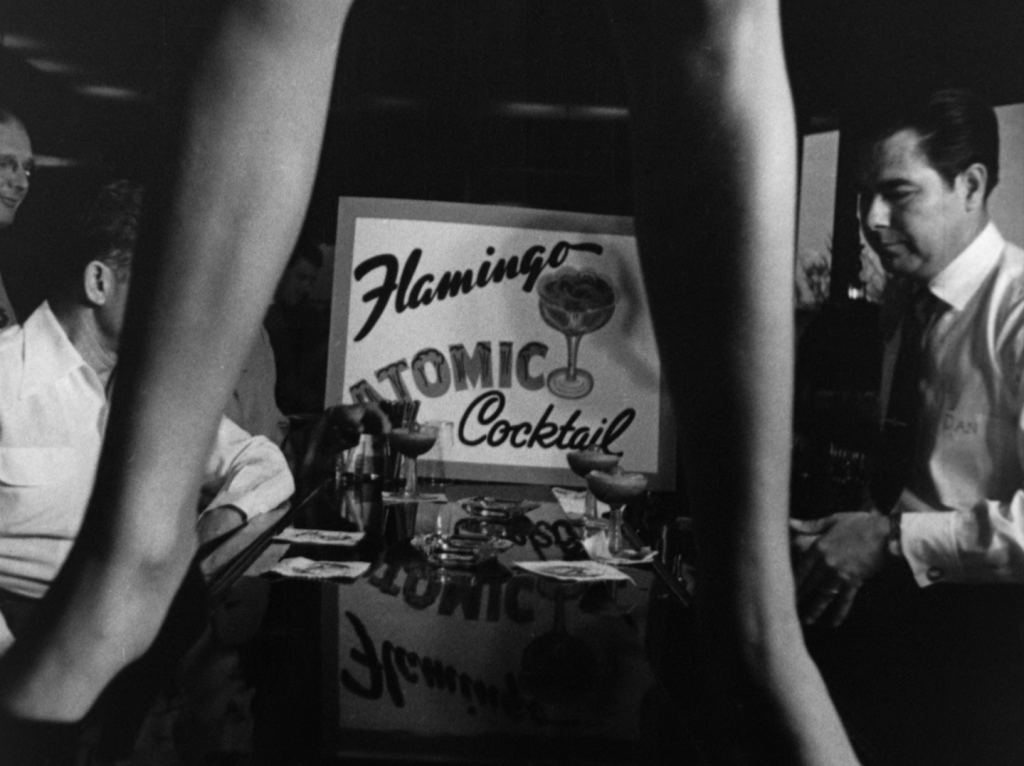
A brilliant, morbidly funny, but absolutely horrifying documentary released when Ronald Reagan had launched a re-escalation of the nuclear arms race with Russia, The Atomic Cafe is entirely composed of found footage—there isn’t even any original narration. The film’s three directors—Jayne Loader, Kevin Rafferty, and Pierce Rafferty—compiled the film strictly from military and commercial propaganda ranging from the late 1940s all the way through to the early 1960s, interspersing it with what are now campy-sounding songs about the nuclear bomb and communism that were recorded during the Cold War. The film ranges from America’s first usage of the nuclear bomb to end World War II, then the intense PR campaign against communism and in favor of using nuclear power to vanquish America’s new foe. About three-quarters of the film clips are from government archives, with the rest coming from newsreels and commercial stock footage.
The Day After (1983)

This made-for-TV nuclear holocaust film debuted on ABC on November 20, 1983 and was watched by over 100 million people, making it the highest-rated TV film in history at the time. It was subsequently broadcast on Soviet Union state TV in 1987 with the filmmakers’ contractual demand that it not be edited nor interrupted with Soviet propaganda. The film is set in the American heartland—mainly Kansas City and Lawrence, KS—as an initial military skirmish between NATO and Warsaw Pact forces quickly becomes a full-blown nuclear war. The scene showing the bombs detonating in Kansas lasts for several minutes and traumatized an American public that had already been on edge after more than a generation of Cold War propaganda. Unlike many such films, though, there is no happy ending in this one.
WarGames (1983)

A young Matthew Broderick stars as David Lightman, a teenage hacker/slacker based in Seattle who accidentally hacks into a US military supercomputer program and begins playing a game called “Global Thermonuclear War” until he realizes that it’s not a game—it’s a robotic simulation that alerts NORAD that the USA is under nuclear attack by the Soviet Union. As tensions flare and panic ensues, Lightman is taken into custody by intelligence officials as they desperately try to avert a global catastrophe that was unwittingly launched by a careless but fun-seeking teen.
Red Dawn (1984)
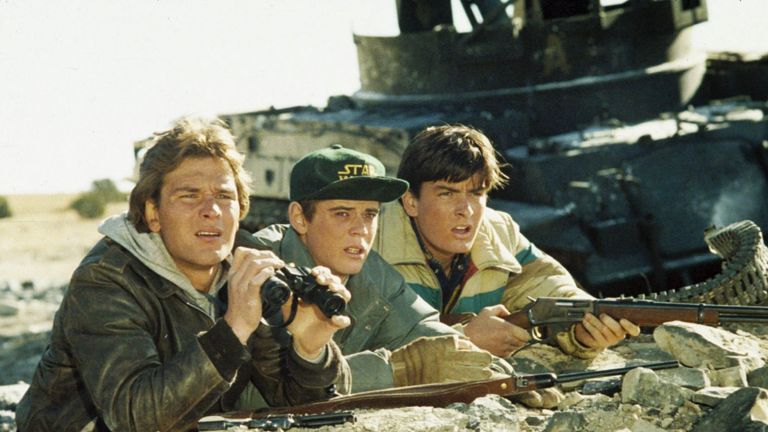
In this action film directed by John Milius, the USA finds itself abandoned by its NATO partners and under threat by an increasingly belligerent communist bloc—including Mexico, which has recently undergone a socialist military coup. Communist soldiers land on American soil, including the small rural Colorado town of Calumet, whose local high-school football team is called the Wolverines. A group of renegade teens escape into the mountains and become guerrilla fighters against the communists, calling themselves the “Wolverines.” At the film’s end, with America victorious, a plaque is shown that reads, “In the early days of World War III, guerrillas – mostly children – placed the names of their lost upon this rock. They fought here alone and gave up their lives, so ‘that this nation shall not perish from the earth.’”
Rocky IV (1985)

This fourth installment of Sylvester Stallone’s Rocky franchise is the first overtly political of the series and is now seen as a cheesy exploitation film that mindlessly parrots American Cold War propaganda. Rocky Balboa (Stallone) and his arch-nemesis Apollo Creed (Carl Weathers) are both enjoying retirement until Creed accepts a challenge from a huge, blank-faced, and coldly sadistic Russian boxer named Ivan Drago (Dolph Lundgren) for an exhibition match. Rocky becomes Apollo’s trainer and has his suspicions about whether Creed is up to the challenge. Drago is such a chemically and scientifically enhanced athlete that he kills Creed in the ring. Rocky, wracked with guilt and a lust for revenge, accepts a challenge to fight Drago in Moscow on Christmas Day. Without giving away the ending, suffice it to say that the Americans are portrayed as decent and loving, while the Russians are depicted as ruthless and unfeeling.
The Living Daylights (1987)
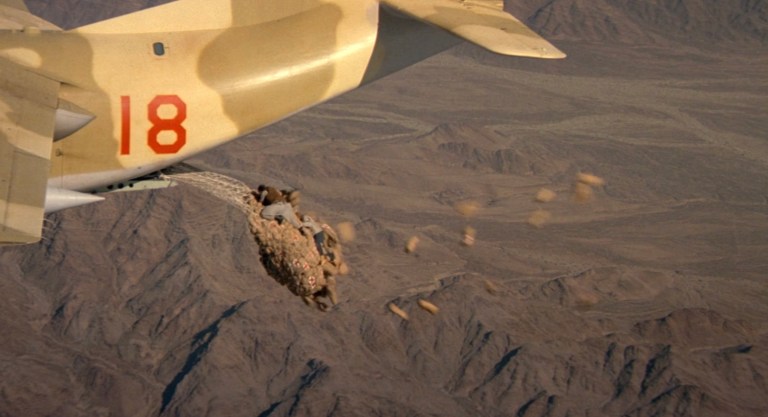
In this James Bond film based on an Ian Fleming short story of the same name, Agent 007—played by Timothy Dalton in one of only two appearances in the role—is tasked to assist a KGB general named Georgi Koskov (Jeroen Krabbe) in his defection to the West. As Bond helps smuggle the agent from Czechoslovakia to Austria, he also falls into the romantic clutches of a beautiful blonde female communist cellist named Kara Milovy (Maryam d’Abo), who, as it turns out, is the girlfriend of Koskov, who, as luck would have it, was not a defector at all. The trio’s misadventures take them into Afghanistan, where Koskov is attempting to buy a huge cache of opium from Muslim Mujahideen fighters who are at war with the Soviets.
The Hunt For Red October (1990)
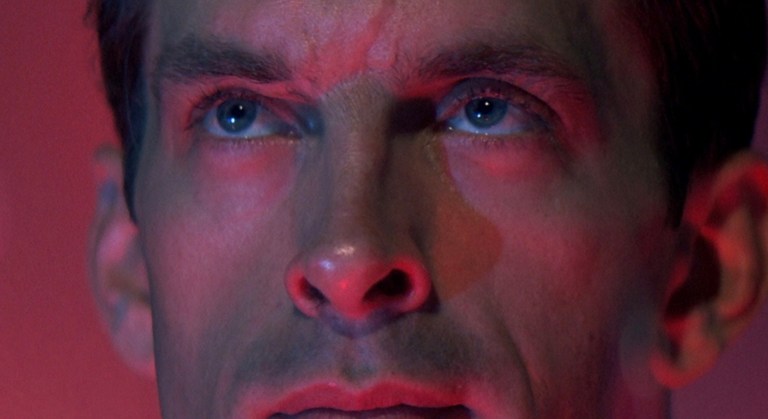
Sean Connery stars as a Soviet naval captain named Marko Ramius, who helms a new ballistic missile submarine designed with an engine that can operate entirely in silence, giving it the ability to reach the American coast and launch an attack without detection. Ramius heads straight for the USA, which leads American officials to panic that he plans to launch World War III. However, Russian officials realize that he’s a defector who plans to hand over their new technology to the Americans. The only American official who seems to realize this is CIA analyst Jack Ryan (Alec Baldwin), who must hurry to convince his higher-ups of the truth before the world is devastated by nuclear war. The film was based on Tom Clancy’s 1984 novel of the same name.
A Single Man (2009)

Cold War paranoia—particularly the Cuban Missile Crisis—merely serves s a backdrop to fashion designer Tom Ford’s directorial debut about a closeted British professor (Colin Firth) who teaches in Southern California and is so distraught over the death of his longtime gay lover (Matthew Goode) that he is constantly besieged with thoughts of suicide until a series of traumatic real-life events knock him back into reality. The film is set in 1964 at a time when anti-communist propaganda and sexual repression were at a peak.
Atomic Blonde (2017)

Charlize Theron, who won a Best Actress Oscar for her depiction of serial killer Aileen Wuornos in the 2003 film Monster, plays a spy for England’s MI6 intelligence agency in Berlin around the time the Berlin Wall fell and the communist bloc crumbled in 1989. She attempts to gain possession of “The List,” which contains the names of all intelligence agents on both sides in Berlin. But she may turn out to be a double agent—or even a triple agent. The film was based on the 2012 graphic novel The Coldest City.
Other Movies About The Cold War
- The Iron Curtain (1948) is widely considered to be the first Cold War film drama. It stars Dana Andrews and Gene Tierney in the story of a clerk working at the Soviet Embassy in Canada who becomes embroiled in a struggle for nuclear secrets.
- On the Beach (1959) is a grim drama starring Gregory Peck and Ava Gardner as lovers in Australia who must struggle to survive amid a postnuclear apocalypse.
- Fail Safe (1964) Henry Fonda and Walter Matthau star in Sidney Lumet’s gripping story of an American bomber headed to Moscow to drop an H-bomb but who cannot be recalled due to technical difficulties.
- The Ipcress File (1965) Michael Caine portrays British detective Harry Palmer, a non-glamourous sort of counterpoint to James Bond, who needs to solve the kidnapping of a nuclear physicist.
- Funeral in Berlin (1966) Michael Caine reprises his role as Harry Palmer, this time attempting to smuggle a Soviet intelligence officer out of East Berlin and into the West.
- Torn Curtain (1966) in this Alfred Hitchcock thriller, Paul Newman stars as a double agent in East Berlin who seeks to escape along with his fiancee (Julie Andrews) to the West.
- Topaz (1969) Set in 1962, the film’s title refers to a shadowy group who attempt to undermine the CIA’s efforts to help a French agent bust a Russian spy ring.
- Tinker Tailor Soldier Spy (1979) in this made-for-TV thriller based on the John le Carré novel of the same name, Alec Guinness stars as a British intelligence officer faced with the unenviable task of rooting out a mole within his ranks.
- Smiley’s People (1982) In this sequel to Tinker Tailor Soldier Spy, Sir Alec Guinness stars as retired British spymaster George Smiley, who is forced to resume his duties when an aging Russian informant who used to report to him is shot.
- The Osterman Weekend (1983) In this, the final film by action director Sam Peckinpah, Rutger Hauer plays an American TV host who has been vocally opposed to Cold War propaganda, only to be informed that his best friends may be Russian spies.
- The Falcon and The Snowman (1985) Timothy Hutton stars as a young CIA employee who quickly grows disillusioned with his job and seeks to share some secrets with the Soviets, only for his drug-addled friend (Sean Penn) to bungle the entire plot.
- Thirteen Days (2000) In this political thriller based on 1962’s Cuban Missile Crisis, Kevin Costner stars as an advisor to President John F. Kennedy as he negotiates a delicate situation that infamously put the world on the brink of nuclear devastation.
- Bridge Of Spies (2015) Tom Hanks stars as a Brooklyn-based lawyer who is sent to negotiate the release of a captured American U2 pilot at the height of the Cold War.
- The Death Of Stalin (2017) In this “comedy of terrors” by writer/director Armando Iannucci, Stalin’s death leads to a chaotic struggle for dominance as his bumbling successors seek to fill his shoes.
- Cold War (2018) released in Poland as Zimna wojna, this tortured romance is set in Poland and France and depicts the struggles of two young lovers from conflicting backgrounds who struggle to keep the flame burning against impossible odds.
